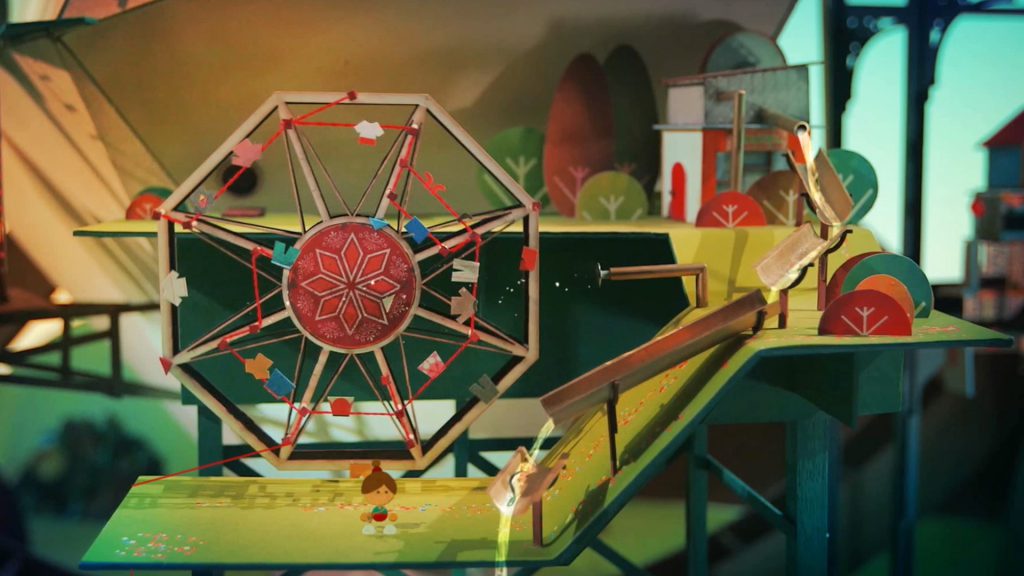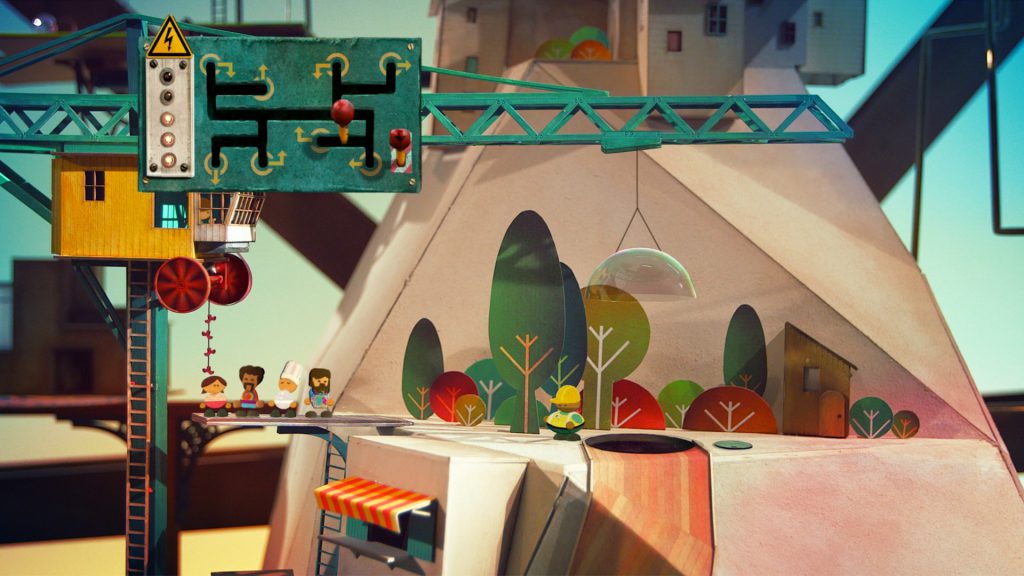About the game:
Lumino City is a point-and-click puzzle-adventure game where you navigate a city in search of the main character’s Grandad, who’s mysteriously disappeared.
How it works:
You play as Lumi, a young girl who looks like a paper doll. Everything in Lumino City looks hand-crafted, and that design makes the city she moves through a wonder to behold.
One day, as she’s making tea for her Grandad, she hears shouts and crashes from the floor above. Someone’s broken in, and her Grandad yells for her to head to the city as he’s taken away. So Lumi sets off on an adventure to find him. Players point and click around the screen to move her around each section of the city, and they can interact with objects to pick them up or click on other characters to talk to them.

The real gameplay is the puzzles, which usually involve different mechanisms. Since the power is out in the city and most people live in precarious locations (on the edges of cliffs, by the river, and so forth), Lumi must help them before she can proceed. This involves tasks like finding an alternate way to power a crane to put a dome seal on a light well (which requires some diplomatic negotiation) or operating a bike to start a water wheel that’s actually one big washing machine. She might have to reattach labels onto chemical bottles for developing photographs (organizing them by their pattern), or arrange lemons properly on a battery board to generate electricity.
Some simply require the right item in your inventory, while others demand more complex logic and spatial understanding. For example, one puzzle involved placing and angling different mirrors and light sources correctly to illuminate various rooms.
Education value:
While I enjoyed my time with Lumino City, at one point I had to stop and think, “How is this game educational, again?”
The goal of Lumino City is to raise awareness for renewable energy technologies and practices that promote self-sufficiency. But you have to remember to pay attention for those things and not get lost in Lumino City’s charm (easier said than done). Its message isn’t usually broadcasted for you.
For example, the game introduced me to light wells, a construct that provides light or air to otherwise dark or unventilated places, reducing the need for electricity. It also taught me about aquaponic gardens, a form of gardening where you fish support the plant life by providing organic food (their waste) and the plants filter the water that the fish live in.

But these learning moments were brief and fleeting. Though I solved puzzles related to them, I also spent time doing tasks totally not related to the environment, such as memorizing and playing a six-part song on a guitar to help a man serenade his wife on their anniversary.
Early on, Lumi receives a “handy manual” filled with hundreds of pages, but she says, “I’ll look at this later,” and puts it away. This manual explores further applications of the technologies featured in the game, but the information isn’t presented in an easy to understand way, and you can solve all the puzzles without needing to look at it. The text on the page is small, the diagrams feel foreign—it’s not a simple book to navigate.
Disappointingly, Lumino City fails to seize opportunities for rich learning.
In the classroom:
Lumino City costs $5 on iOS and $20 on Mac or PC. It’s best suited for middle or high school students. In order to glean the most educational value from the game, you’ll need to do the heavy lifting with your students.
It may be useful to have students keep a journal on the kinds of technologies they come across in Lumino City and how they solve different puzzles. Then in class, further research and discuss these different solutions and have students present on their favorite from the game, teaching the class what they learned.
One of the most prominent themes of the game is, how do people survive and flourish as a community without power? It quietly asks questions such as, how can people wash their clothes without electric washing machines? How can they generate their own power in a blackout or grow their own food? Can a city ever be too large that it create problems? Or my favorite, how do you open a can when your electric can opener is broke? (Answer: Borrow your neighbor’s.)
Fun factor:
Lumino City is a charming, lovable game with puzzles that require time and patience, but it misses the mark when it comes to truly spreading an awareness and understanding of the technologies and practices that make its environments so unique.


